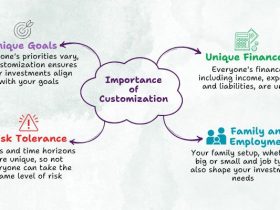Cybersecurity has evolved to a great extent over the years. Recall the first ever Trojan virus ever created and how big of a deal it was, and then compare it to the present time and see how it can be easily removed through an anti-virus. You will realize how many great steps have been taken to make these cybersecurity threats less scary and easier to remove from our system and mobile devices.
But knowing all that and putting your sole confidence in an anti-virus program isn’t the right attitude to have either. One has to stay constantly vigilant and updated with the new online security norms and the methods required to tackle all existing security threats. The internet is an abyss of threats, online attacks, shady content and hackers waiting for their next victim.
Now keeping that notion in mind, we have accumulated a list of internet security basics that will help you in the long run.
Malware
Malicious Software or shortened as Malware, is a category of software programs that contain malicious content that pose as a threat for your system’s security and performance.
Ransomware
A subcategory of malware, ransomware doesn’t allow users to access their files or the entire system by taking the role of the primary access holder.
Spyware
Spyware is a sneaky one. It sneaks into your system, creates logs of your online activities and then steals crucial information such as your passwords, credit/debit card details or any such credentials.
Adware
The primary purpose of an adware program is to infiltrate your system and show you advertisements befitting your interests. But that means the adware is constantly monitoring your activities and online behavior that too without your permission.
Phishing Attacks
The most common medium to execute a phishing attack is through email. The email sender tricks the recipients to share private information such as any form of credentials or bank account details.
How To Protect Yourself
Don’t let the aforementioned security threats scare you. There’s a solution for each such threat and we have got you covered. Just follow the few basic tips we have jotted down for you.
Install security software
Getting a reliable internet connection such as Spectrum Offers before you install any anti-virus or malware detection program is a must. While most of these applications run in the background and don’t always require internet connection but in case of updating them, you would require a stable internet connection. Make sure you periodically check your system, browsers and all file directories for any malicious findings. Once the scanning and detection period is completed, the security software will get rid of the dubious applications and files.
Don’t fall for phishing attacks
While phishing attacks do seem reliable and convincing but you can easily differentiate between what’s authentic and what’s not. Email platforms such as Gmail and Yahoo Mail have strict security protocols. If they spot any email that is slightly shady, both toss such emails into the spam folder of your email account. Gmail even shows a disclaimer that the email might not be sent from a trusted sender and might contain suspicious links. That’s why any given images and links in such emails aren’t clearly shown until you whitelist the said email. If the email is phishing you as your bank’s website, the go-to approach is to check your bank’s official website before making any move.
Avoid clicking popup notifications
Push notifications on your smartphone or popup notifications on a computer browser can be suspicious as well. While some contain adware and will display you annoying ads here and there, some contain malicious links and pose as greater threats. So if you are looking to download a Google Chrome extension or maybe WinRAR, make sure you click on the correct download button. But more than that, try looking for the official website of any application or browser extension. Many websites will show up on the search console through a simple Google search but you have to avoid all dubious-looking popups and only head to the official websites for downloading.
To conclude
We put together every essential bit of information that can keep you same from malware and phishing attacks entirely. We cannot guarantee 100% protection but with the right set of security protocols such as having an anti-virus program installed and updated operating system, you are good to go.









